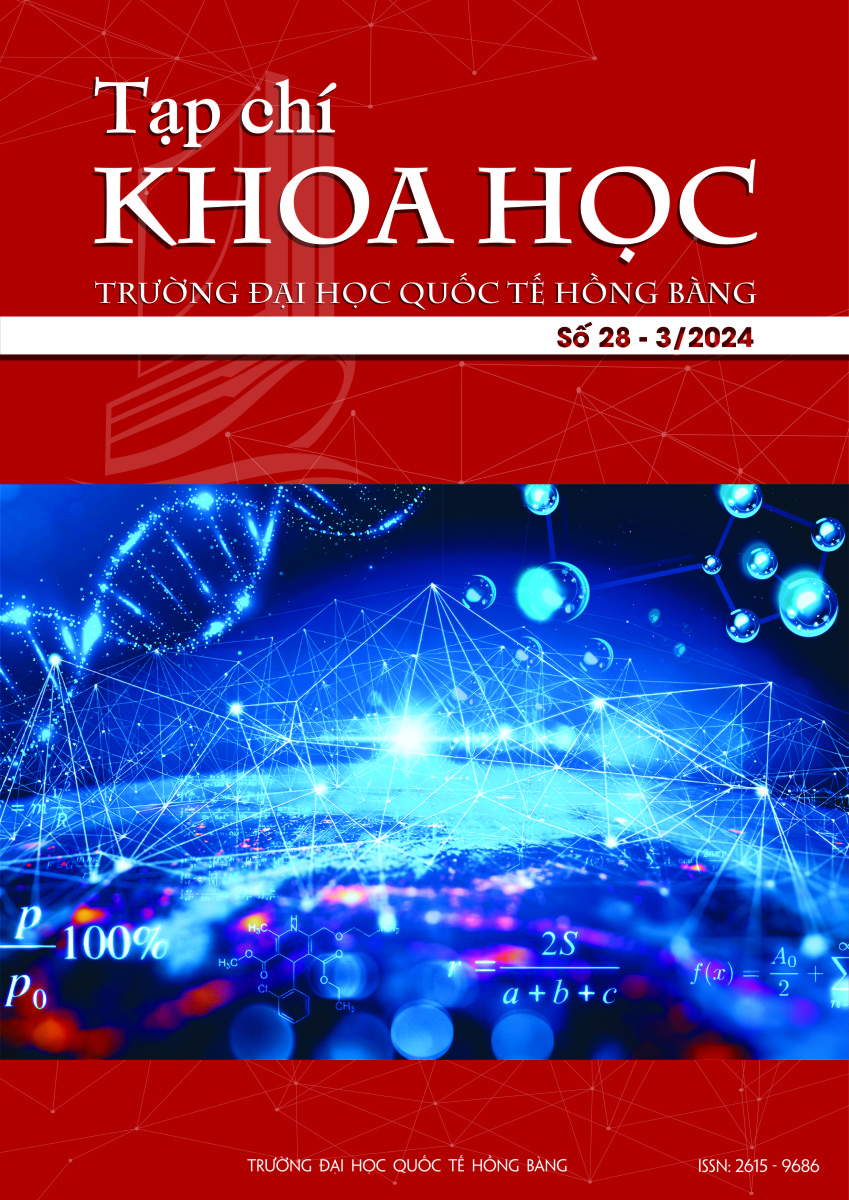Cập nhật vật liệu gắn nha khoa
Các tác giả
DOI: https://doi.org/10.59294/HIUJS.28.2024.583Từ khóa:
Vật liệu gắn nha khoa, nha khoa phục hồi, phục hìnhTóm tắt
Đặt vấn đề: Vật liệu gắn nha khoa đóng vai trò quan trọng trong việc đảm bảo thành công của phục hình trong lĩnh vực nha khoa phục hồi. Những vật liệu này giúp giữ dính và ổn định phục hình trên cấu trúc răng đã được mài sửa soạn. Việc lựa chọn và ứng dụng vật liệu gắn đóng vai trò then chốt trong việc tăng cường chức năng và thẩm mỹ dài hạn của phục hình. Mặc dù đã có nhiều tiến bộ nhưng đến nay chưa có một loại vật liệu gắn phục hình nào có tất cả những tính chất lý tưởng, từ đó thúc đẩy những nỗ lực nghiên cứu và phát triển liên tục để cải thiện hiệu quả lâm sàng và giới thiệu các vật liệu gắn mới trong thực hành nha khoa. Phương pháp nghiên cứu: Tổng quan y văn về các loại vật liệu gắn nha khoa, bài báo này nhằm mục đích thảo luận một cách toàn diện về tính chất vật lý, hóa học, tính kết dính và thẩm mỹ của các loại vật liệu gắn phục hình thường được sử dụng. Kết luận: Nghiên cứu này cung cấp cho người đọc cái nhìn tổng quan về lịch sử phát triển, tính chất của các loại xi măng gắn nha khoa thông dụng, qua đó đề xuất các chỉ định lâm sàng cho mỗi loại vật liệu dựa trên các đặc tính cụ thể của chúng. Đồng thời cho thấy sự cải tiến của các loại vật liệu gắn truyền thống và sự phát triển của các loại vật liệu gắn mới, giúp tối ưu hóa kết quả điều trị và đảm bảo thành công dài hạn của phục hình trong thực hành nha khoa.
Abstract
Background: Dental luting materials play a crucial role in ensuring the success of dental restoration in the field of restorative dentistry. These materials help to adhere and stabilize the restoration on the prepared tooth structure. The selection and application of luting materials are pivotal in enhancing the long-term functionality and aesthetics of the restoration. Despite numerous advancements, there hasn't been a type of dental luting material that possesses all ideal properties, thus driving continuous research efforts to improve clinical effectiveness and introduce new luting materials in dental practice. Research methods: This article provides a comprehensive review of the literature on various dental luting materials, aiming to discuss the physical, chemical, adhesive, and aesthetic properties of commonly used restorative luting materials. Conclusion: Consequently, clinical indications are proposed for each type of material based on their specific properties. Furthermore, it offers an overview of the improvement in traditional luting materials and the development of new luting materials. By staying abreast of advancements and having profound knowledge of dental luting materials, dental practitioners can optimize treatment outcomes and ensure long-term success of restorations in dental practice.
Tài liệu tham khảo
[1] G.K.H. Leung, A.W.Y. Wong, C.H. Chu and O.Y. Yu, "Update on Dental Luting Materials", Dentistry journal, 10, 208, 2022. DOI: 10.3390/dj10110208.
DOI: https://doi.org/10.3390/dj10110208[2] A. Heboyan, A. Vardanyan, M.I. Karobari,…, and A. Avetisyan, "Dental Luting Cements: An Updated Comprehensive Review", Molecules, 28, 1619, 2023. DOI: 10.3390/molecules28041619.
DOI: https://doi.org/10.3390/molecules28041619[3] M. Kumar, A. Avasthi, S. Khanna, …, and N. Bathla, "A literature review on various luting cements used in dentistry", IP Annals of Prosthodontics and Restorative Dentistry, 8(4), 199–202, 2022. DOI: 10.18231/j.aprd.2022.041.
DOI: https://doi.org/10.18231/j.aprd.2022.041[4] K.Wingo, "A Review of Dental Cements", Journal of Veterinary Dentistry, 35(1), 18-27, 2018. DOI: 10.1177/0898756418755339.
DOI: https://doi.org/10.1177/0898756418755339[5] E.Hill, "Dental cements for definitive luting: a review and practical clinical considerations", Dental Clinics of North America, 51(3), 643–58, 2007. DOI:10.1016/j.cden.2007.04.002.
DOI: https://doi.org/10.1016/j.cden.2007.04.002[6] R.L. Sakaguchi, Restorative Dental Materials, 14th ed., Elsevier: St. Louis, MO, USA, 2019.
[7] S. K. Sidhu and J.W. Nicholson, "A review of glass-ionomer cements for clinical dentistry", Journal of Functional Biomaterials, 7(3),16, 2016. DOI: 10.3390/jfb7030016.
DOI: https://doi.org/10.3390/jfb7030016[8] N. Krämer, M. Schmidt, S. Lucker, E. Domann and R. Frankenberger, “Glass ionomer cement inhibits secondary caries in an in vitro biofilm model”, Clinical Oral Investigations, 22, 1019–1031, 2018.
DOI: https://doi.org/10.1007/s00784-017-2184-1[9] S.Y. Cho and A.C. Cheng, "A review of glass ionomer restorations in the primary dentition", Journal of the Canadian Dental Association, 65, 491–495, 1999.
[10] J.L. Ferracane, J.W. Stansbury and F.J.T. Burke, "Self-adhesive resin cements—Chemistry, properties and clinical considerations", Journal of oral Rehabilitation, 38, 295–314, 2011.
DOI: https://doi.org/10.1111/j.1365-2842.2010.02148.x[11] S. Najeeb, Z. Khurshid, M.S. Zafar,…, and I.U.Rehman, "Modifications in glass ionomer cements: Nano-sized fllers and bioactive nanoceramics", International Journal of Molecular Sciences, 17, 1134, 2016. DOI: 10.3390/ijms17071134.
DOI: https://doi.org/10.3390/ijms17071134[12] R.I. Falacho, J.A. Marques, P.J. Palma, …, and M.B. Blatz, "Luting indirect restorations with resin cements versus composite resins: Effects of preheating and ultrasound energy on film thickness", Journal of esthetic and restorative dentistry, 34, 641–649, 2022.
DOI: https://doi.org/10.1111/jerd.12851[13] J.D.R. Derceli, L.M.G. Fais and L.A.P. Pinelli, "A castor oil-containing dental luting agent: Effects of cyclic loading and storage time on flexural strength", The Journal of Applied Oral Science, 22, 496–501, 2014.
DOI: https://doi.org/10.1590/1678-775720140069[14] D.I. Selvido, H.E. Skallevold, G. Kathayat,…, and D. Rokaya, "Polyurethane for Medical and Dental Applications: An Update", ACS Symposium Series, 1454, 2023, DOI: 10.1021/bk-2023-1454.ch005.
DOI: https://doi.org/10.1021/bk-2023-1454.ch005[15] E.E. Hill and J. Lott, "A clinically focused discussion of luting materials", Australian Dental Journal, 56 (Suppl. 1), 67–76, 2011. DOI: 10.1111/j.1834-7819.2010.01297.
DOI: https://doi.org/10.1111/j.1834-7819.2010.01297.xTải xuống
Tải xuống: 632











